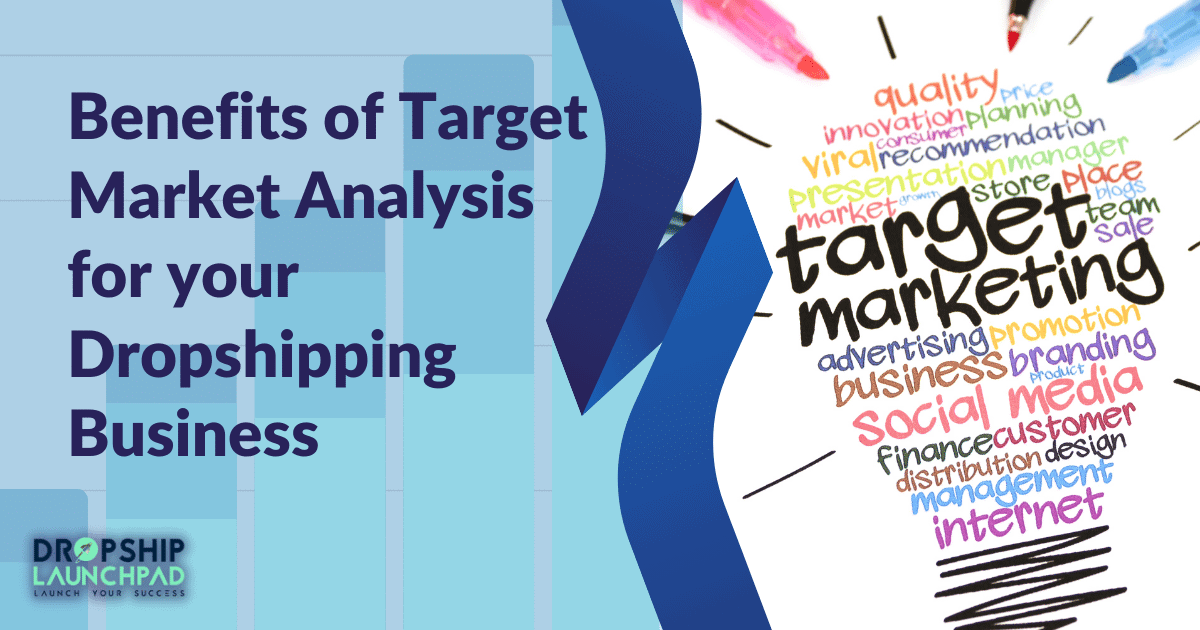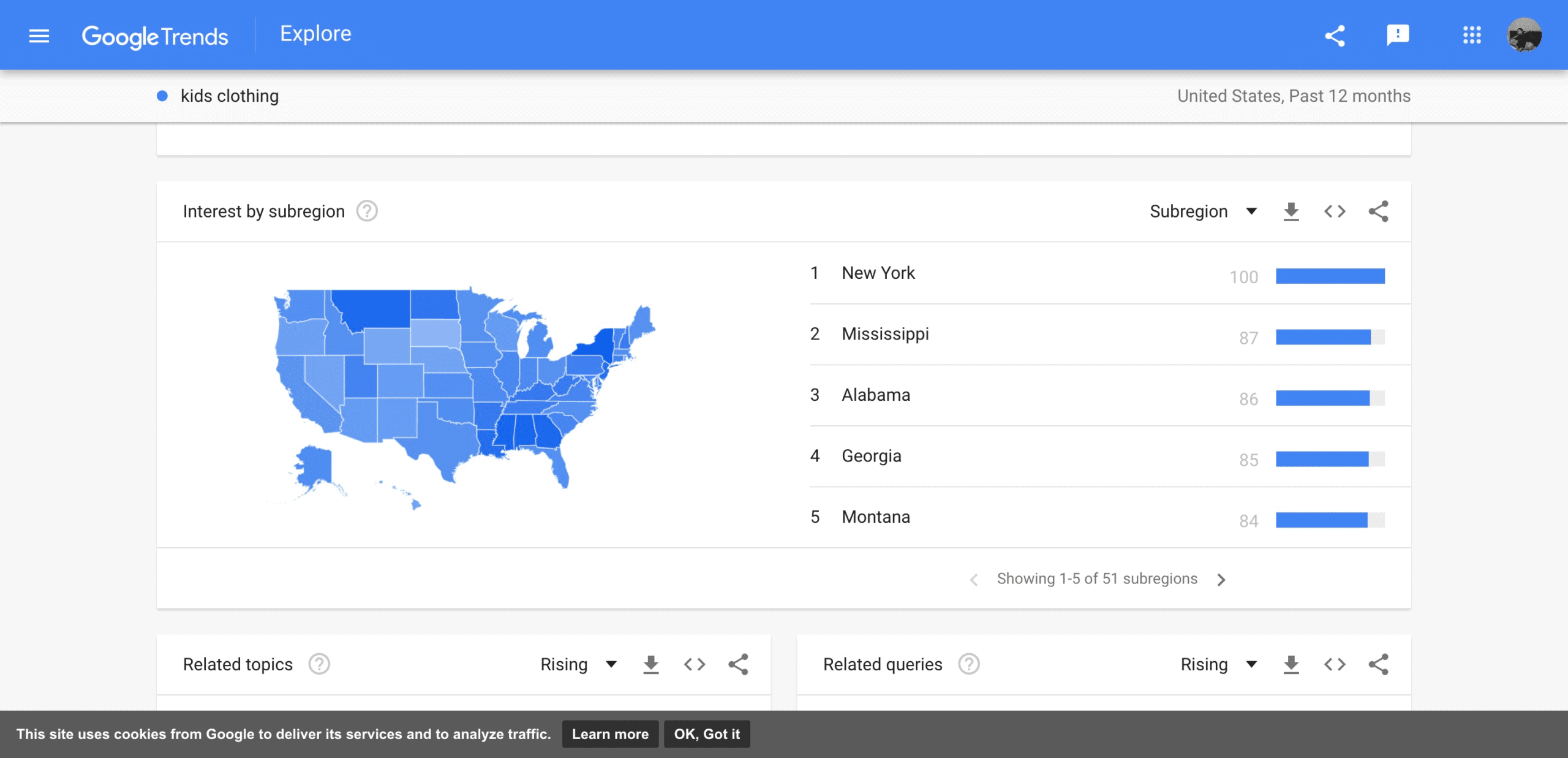- If you’re interested in dropshipping, it’s essential to do a target market analysis for your online business. Throughout this post, you’ll find an in-depth analysis of the Dropshipping target market analysis for 2022. We’ll outline who the target market is, their needs and wants, and how you can best serve them. Keep reading to learn more!
What is the target market?
A target market represents a portion of the people for whom your company plans to sell its product. Using targeted marketing strategies, you identify the most likely buyer demographic information and allocate marketing resources accordingly.
In addition, showcasing images of a target market can be divided into buyer personas based on qualitative and measurable data ranging from demographic information, personality traits, and purchasing habits.
Target market analysis: What is it?

An analysis of a target market involves assessing a given market to determine its attractiveness and feasibility as a potential target market for a company. A company will consider size, demographics, buying power, competition, and other relevant factors to assess.
According to Kotler, target marketing is “the process of identifying, qualifying, and developing a detailed understanding of the needs and wants of specific customer groups.” “It involves selecting one or more specific groups of buyers as targets for marketing efforts.”
It will assess how your product or service can fit into the specific market and gain more attention from the customer. Target market analysis helps businesses develop marketing strategies. In a company’s target market, the core customers are the demographic types that are more likely to buy the products or services.
It provides an extensive view of a business field and highlights opportunities for companies to enter that industry.
If a company decides that a given market is attractive and feasible as a target market, it will then develop marketing strategies specifically tailored to that market. The goal is to attract consumers to the target market and convert them into customers.
Target market analysis for dropshipping
Target market analysis is a vital component of any business, but it’s particularly important for those considering dropshipping as a commerce method.
In Dropshipping, the middleman between the retailer and wholesaler is eliminated, which reduces prices considerably. It allows retailers to offer lower prices than traditional brick-and-mortar stores by cutting overhead and eliminating the need for a physical storefront.
Dropshipping also enables retailers to focus on marketing rather than stocking up on inventory or managing a warehouse. It means more time spent generating sales and less time spent maintaining an inventory of goods, which can be costly and risky. However, this model can result in substantial losses if the supplier fails to ship an order if done improperly.
For marketing efficiently, you need to find out your target market. What group of potential customers will benefit most from your product or service? Can you position yourself as the best choice in the market segment that you’ve chosen?
How do dropshipping companies define their target market?

Dropshipping Businesses can analyze their target markets in various ways depending on their products/services and goals. However, some typical ways that companies may define their target market include demographics (age, gender, income level, etc.), psychographics (lifestyles, interests, values), or geographical (location, region).
Ultimately, the most effective way to determine a company’s target market is by doing market research to understand who its ideal customer is. It involves studying what customers want and need, value, and how they shop/buy. Armed with this information, eCommerce businesses can develop marketing strategies specifically to reach these customers.
As your business grows and develops, you’ll learn more about your customers. So, the user persona can be shaped by a specific client profile.
A step-by-step guidance to define the target market for any business-
- Start by identifying your ideal customer, your target market. This group of people would benefit from using your product or service and who you can reach with an effective marketing strategy. Suppose you want to conduct a business on kids’ clothing in the United States.

From the Google trends, you can get a good idea about your target market and it’s a good place where you can get an idea of your interested group by subregion and get some product ideas.
- Research your target market to learn more about their demographics (e.g., age, gender, income, location), needs and wants, and what motivates them.
- Identify where your target market spends their time and money. This can help you determine where to allocate your marketing resources (e.g., online ads, print ads, TV commercials).
- Tailor your marketing messages to appeal to the needs and wants of your target market.
- Test your advertising with them to determine whether it’s effective or needs revision.
- Repeat the process as you develop a complete marketing strategy for reaching the right people through the right medium.
You can enjoy working on your target market because it’s the only way to get to the customers you want.
Steps to do after defining your target market

Evaluating your target market
Once you conduct market research and decided what your target market should look for, test the concept for your online store. Occasionally, trial and error may be needed to locate the focus groups which best suits your eCommerce business needs.
When you can communicate with two different parties in a group, it is a sign you’re going too far. Keep your target customers focused on a unique level.
Understanding the appeal of target marketing
Imagine a company selling accounting software products. With the help of your Software accountants accomplish fewer calculations in fewer hours and eliminates errors.
In the above case, the targeted market is the accountant who needs new software solutions. You can also attract others. For example, an organization might need your Software for its finances.
A freelancer may invest in your tools for their potential customers. You need to identify the market you’re trying to reach and make new sales strategies to attract new customers.
Get to know your target market.
Many companies discover more about their target market with each change in their product lines. All of your social media marketing and e-newsletters can help you understand your audience accurately.
Typically, it’s helpful to understand the audience from their point of view and how their life development begins. However, as you interact with your audience, you may learn more about your target audience’s behavior.
Wrapping up
It is difficult to let go of your assumptions about your goals. If you’re trying to fill out an answer, you have better chances of contacting current customers as well as potential customers. As your business grows, it will help you keep in touch with your target market. Your audience must be dynamic. This is constantly evolving!
Keep it simple, take a little time, and revisit the drawing board to assess your goals and maybe uncover new opportunities!
Designing a Buyer Persona
You can start developing a more comprehensive plan that defines your audience. Your buyer personas explain what you can learn from people who respond well to your marketing efforts. The buyer persona needs all the details and a buyer persona gives you a map of how a product fits in the life of a customer or person.
Target Market Example for Ecommerce

Let’s say you are interested in launching an online dropshipping furniture business. According to U.S. retail e-commerce data, furniture and home furnishing sales made up 11.78 percent of all retail sales.
By 2026, furniture and bedding will account for $145 billion in worldwide sales, according to Furniture Today and Easy Analytic Software Inc. (EASI) calculations. Is this an early indication that there is a rising demand?
Definitely, it’s a good sign for those who are interested in this industry.
Benefits of Target Market Analysis for your dropshipping business

Customer data is critical to understanding how best to market your store online and offline. A further benefit to targeting markets is the following:
Understanding your target customer:
By understanding your target customer, you can craft a marketing strategy that specifically appeals to their needs and desires. It will help you connect with them on a deeper level and increase the chances of conversions.
Determining what products or services to offer:
By determining your target market clearly, you can determine the best products or services to offer. You can tailor your offerings based on what you know about your customers’ needs and wants. This will help improve customer satisfaction and loyalty.
Crafting effective messaging:
The right messaging will resonate with your target customers and motivate them to take action. Tailoring your messaging to fit your target customer allows you to give a more personal touch while emphasizing the advantages of your offerings.
Establishing effective pricing strategies:
Knowing what price points work for your target customers will help you determine the best pricing strategy for your offerings. By establishing an attractive pricing strategy, you can encourage more significant sales and increase profits.
More accurate estimation of future sales and revenue potential:
Target market analysis allows you to determine the demand for your products and services. You will be able to decide on future sales and revenue potential, which can be used as part of your business strategy.
Gaining a competitive advantage over rivals:
Knowledge about your target market allows you to understand your customers’ needs and desires better. Brand differentiation can help you stand out from the competition, which is part of your marketing strategy.
Building better relationships with customers:
Customer data is vital for helping you stay connected to your customers, especially if you offer recurring services or products. By understanding your customer, you can personalize their experience and strengthen the relationship between your brand and the target market.
Better allocation of marketing resources:
Target market analysis allows you to focus your marketing spend more efficiently. This will help maximize ROI while minimizing marketing costs, that is critical for scaling up a successful business.
Engage in constant learning

Many people struggle to find the right target audience because they view targeted marketing as a setup and forget strategy. It would help if you continually learned about your customer experience with your brand.
Humanity changes in constant ways. New shopping and trending items are important in attracting your audience. Keep yourself motivated to learn continuously.
Q&A About target market analysis

Q1: How do I identify the target market for my eCommerce store?
Answer: To identify your targeted market, you must research and consider your competitors and examine consumers’ preferences. All this analysis helps you to understand who the market is seeking. The questions are essential in developing, executing, and analyzing the target marketing strategy.
Decide who your target market is in the first step. It is a fictional representation of your target market.
To create a persona, you’ll need to answer some questions about them, such as:
-What are their demographics (age, gender, marital status, income level, etc.)?
– What are their interests and hobbies?
– Their pain points or problems they’re trying to solve?
– What does success look like for them?
As soon as you know your target customer, you can start thinking about where they hang out online and offline. You can also start thinking about what kinds of content they would be interested in and how their decisions may be made.
Q2: What is a target market example?
Answer: A target market example is a specific group of people that a company identifies as its most likely customers.
For example, Nike might target young athletes as its target market, while Volvo might target parents with young children. The key to success for companies is to identify their target markets and then create marketing strategies specifically tailored to those groups of people.
Q3: Who is the target market for online selling?
Answer: The target market for online selling includes anyone looking to buy online products. People can compare prices from various sellers and find the best deals by shopping online. Additionally, people can often save even more money by buying items in bulk or through online auctions. Finally, online shoppers can take advantage of free shipping offers and other promotions to get the best deals possible.
Online selling is an excellent way for small businesses to reach a larger audience. By selling online, businesses can tap into consumers from all over the world looking for products and services. Additionally, online selling can help businesses build a loyal customer base by making it easy for customers to find information about the company and its products and provide a convenient shopping experience.
Q4: What is the target market for any dropshipping business?
Answer: A dropshipping business can be marketed to anyone with an internet connection. However, the ideal customer is comfortable making online purchases and looking for a convenient means of buying products.
In addition, a dropshipping business should target customers in regions where eCommerce is snowballing, such as Asia and South America. By focusing on these areas.
If you run a niche store, all customers interested in your niche are your target market and if you run a general store, your target market is everyone.
Q5: What is market segmentation for e-commerce stores?
Answer: Market segmentation simply means dividing a market into segments or groups of people who share a standard set of characteristics. By doing this, you can focus your marketing strategy on the most profitable group of customers rather than trying to “sell to everyone.” Market segments are important to run a successful business.
Q6: Who is the target audience for a website?
Answer: The target audience for a website can vary depending on the website’s purpose. However, in general, the target audience for a website can be broken down into three categories: consumers, businesses, and people in other industries.
- Consumers are people who visit a website to buy products or services.
- Businesses who visit a website to find information about products or services.
- People in other industries visit a website for information that is not related to buying products or services.
Q7: What are the four target marketing strategies?
Answer: The four target marketing strategies are market targeting, market segmentation, market positioning, and product differentiation.
- Market targeting is the process of selecting a particular market to focus on.
- On the other hand, market segmentation is dividing a market into smaller segments that can be more efficiently served.
- Market positioning is the process of designing a product’s position in the minds of consumers.
- And finally, product differentiation is the process of making products different from one another so that consumers will see them as unique offerings.
Final thoughts
As the eCommerce industry matures, it is increasingly difficult to succeed without a well-defined target market. In case you are interested in dropshipping, this article should have given you a thorough understanding of the target market analysis process. Hopefully, by now, you’re convinced that it requires conducting market research and market testing before jumping in headfirst.
It also goes without saying that there is no one-size-fits-all solution for any business and your strategy needs to be tailored to suit both your product line and the specific customer base from which those products are being sold.
Spending more time and effort collecting these right details upfront will pay off down the road with higher conversion rates and better sales numbers. In short, don’t go “all in” on a new venture until you’ve done enough target market analysis to be confident that it’s the right move.
>> Start your dropshipping business with Shopify here!
Some related articles:
- Is Dropshipping Possible Worldwide in 2022?
- Can I Really Make Money with Dropshipping?
- AliExpress Dropshipping Center: The Definitive Guideline (2021)
- Finding Winning Products: Dropshipping in 2021
- Dropshipping: 12 Secret Tips for Using Google Trends 2022
- Dropshipping vs. Affiliate Marketing in 2022: which is better?
- Shopify Dropshipping Business Guide: The Ultimate Solution 2022


 Top 10 Dropshipping Websites & Companies for Your Store
Top 10 Dropshipping Websites & Companies for Your Store  10 ways to boost free traffic to your dropshipping store in 20232
10 ways to boost free traffic to your dropshipping store in 20232  2023’s top 10 tips to find Winning Dropshipping Products on Facebook
2023’s top 10 tips to find Winning Dropshipping Products on Facebook  Dropshipping Store Competition: 23’s Top 8+ Tips to Be a Winner
Dropshipping Store Competition: 23’s Top 8+ Tips to Be a Winner